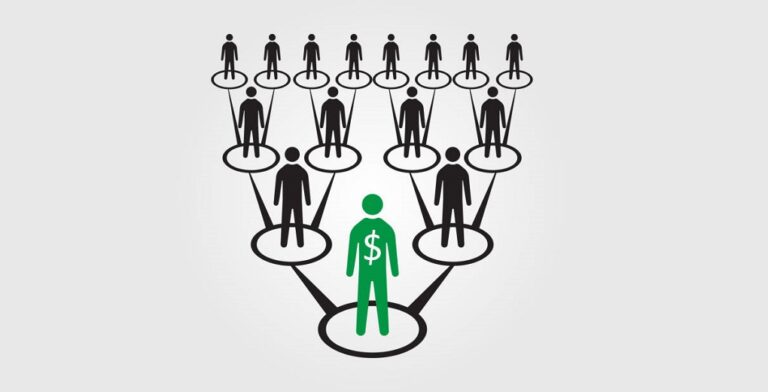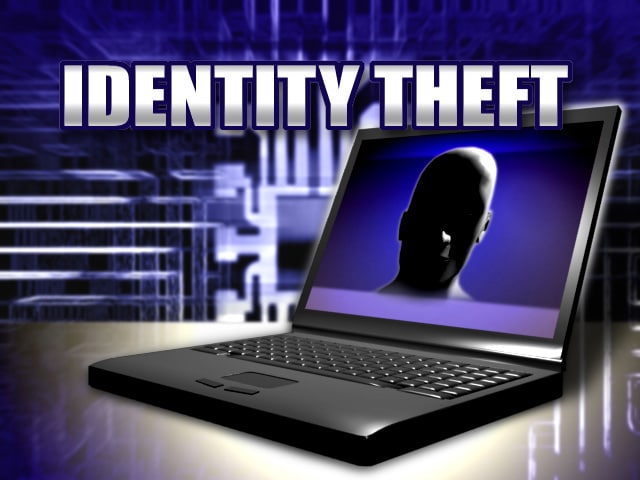Deceptive Chameleons: Unveiling the Multifaceted Nature of AI-Generated Deepfakes
AI-generated deepfakes are not simply manipulated videos or audios. They are, at their core, synthetic chameleons: digital creations crafted by artificial intelligence that seamlessly blend the real and the fabricated. But unlike regular chameleons blending into their surroundings, deepfakes aim to deceive, masquerading as authentic representations of reality to manipulate our perception.
The rapid advancement of artificial intelligence (AI) has opened up a plethora of possibilities, from revolutionizing healthcare to enhancing creative endeavors. However, like any powerful tool, AI also harbors potential risks, particularly when it comes to the manipulation of digital content. In the realm of politics, the rise of AI-generated deepfakes poses a significant threat to the integrity of democratic processes, particularly in the upcoming 2024 elections.
Deepfakes are synthetic media artifacts that utilize sophisticated machine learning techniques to seamlessly alter or create digital content, often involving the manipulation of faces, voices, or other elements. While initially confined to the realm of niche hobbyists, deepfake technology has witnessed exponential growth in recent years, becoming increasingly accessible and user-friendly. This democratization of deepfake creation has amplified the potential for malicious actors to exploit these tools to spread disinformation, sow discord, and manipulate public opinion.
The threat posed by deepfakes to the 2024 elections is multifaceted. Malicious actors could use deepfakes to create doctored videos of political candidates making outrageous or controversial statements, tarnishing their reputations and swaying public perception. They could also manipulate audio recordings to make candidates appear to endorse or oppose certain policies or individuals. The seamlessness of deepfakes makes it increasingly difficult for viewers to distinguish between real and fabricated content, adding to the challenge of combating their spread.
To address this emerging threat, a multi-pronged approach is necessary. Firstly, technological advancements in deepfake detection and verification need to be prioritized. Researchers and developers are working on algorithms that can identify inconsistencies and anomalies in deepfakes, providing valuable tools for verification. Secondly, media literacy and critical thinking skills must be promoted among the public, empowering individuals to discern authentic content from fabricated deepfakes. Education campaigns can instill skepticism towards sensational or outlandish claims, encouraging fact-checking and cross-referencing before drawing conclusions.
5 Ways of AI-Generated Deepfakes: A Comprehensive Guide
Deepfakes, the creation of synthetic media using artificial intelligence, have emerged as a concerning phenomenon, posing a threat to the authenticity of information and the integrity of public discourse. These manipulated videos, audio recordings, and images have the potential to deceive even the most discerning observers, making it difficult to distinguish between reality and fabrication. Understanding the various methods employed in deepfake creation is crucial for developing effective detection methods and fostering media literacy.
1. Facial Manipulation
One of the most common deepfake techniques involves manipulating faces, allowing the insertion of a person’s likeness into a different video or image. This can be achieved using deep learning algorithms that train on vast amounts of data, including images and videos of the target individual. These algorithms can then identify and replicate the unique features of the target’s face, allowing them to be seamlessly inserted into new contexts.
2. Voice Synthesis
Deepfakes can also be created by synthesizing voices. This involves using machine learning algorithms to analyze and replicate the vocal characteristics of an individual, such as their intonation, pitch, and accent. These algorithms can then generate audio recordings that appear to have been spoken by the target individual, even if they never actually said the words.
3. Video Manipulation
Deepfakes can also involve manipulating videos without altering the faces or voices of the individuals involved. This can be done by re-editing existing footage to make it appear as if someone is doing or saying something that they never actually did. For instance, a deepfake could be created to make it look as if a politician is making a controversial statement that they never actually made.
4. Audio-Video Manipulation
Combining audio and video manipulation techniques, deepfakes can create highly realistic and convincing fabrications. This involves synchronizing the audio and video to create the illusion that the target individual is speaking the words in the audio recording. This technique is particularly effective for creating fake news videos or doctored interviews.
5. Generative Adversarial Networks (GANs)
Generative adversarial networks (GANs) are a type of deep learning algorithm that have become a powerful tool in deepfake creation. GANs work by training two competing neural networks against each other. One network, the generator, learns to create new data, while the other network, the discriminator, learns to distinguish real data from fake data.
What are the potential risks of deepfakes?
Deepfakes can have a variety of negative consequences, including:
- Spreading misinformation: Deepfakes can be used to spread false information and propaganda, which can erode trust in institutions and undermine democratic processes.
- Harming reputations: Deepfakes can be used to damage the reputations of individuals and organizations by creating fake videos or audio recordings that make them appear to be saying or doing something that they never did.
- Affecting public opinion: Deepfakes can be used to manipulate public opinion by creating videos or audio recordings that make it appear as if a particular candidate or policy is more popular than it actually is.
In the Realm of the Fake: 8 Examples of Deepfakes That Fooled the World
In the ever-evolving landscape of technology, artificial intelligence (AI) has emerged as a powerful tool with the potential to revolutionize various aspects of our lives. However, like any powerful tool, AI also harbors potential risks, particularly when it comes to the manipulation of digital content. In the realm of visual media, the rise of deepfakes has become a cause for concern, as these AI-generated synthetic media artifacts pose a significant threat to the authenticity of information and the credibility of individuals.
Deepfakes are created using sophisticated machine learning algorithms that can seamlessly alter or create digital content, often involving the manipulation of faces, voices, or other elements. While initially confined to the realm of niche hobbyists, deepfake technology has witnessed exponential growth in recent years, becoming increasingly accessible and user-friendly. This democratization of deepfake creation has amplified the potential for malicious actors to exploit these tools to spread disinformation, sow discord, and manipulate public opinion.
The following are 8 examples of deepfakes that have captured the attention of the world:
- Barack Obama Endorsing a Third-Party Candidate: In 2019, a deepfake video of former President Barack Obama circulated online, appearing to show him endorsing a third-party presidential candidate. The video was widely shared and believed to be authentic until it was later revealed to be a deepfake.
- Kim Joo-Ha’s Fake Interview: In 2019, a deepfake interview of the late South Korean newscaster Kim Joo-Ha went viral. The interview appeared to show Joo-Ha discussing sensitive topics, but it was later revealed to be a deepfake created by a group of students.
- Lynda Carter as Modern-Day Wonder Woman: In 2020, a deepfake video featuring actress Lynda Carter as Wonder Woman reimagined the iconic superhero in a modern setting. The video was praised for its realism and generated a lot of buzz online.
- The Mandalorian/Star Wars Luke Skywalker Deepfake: In 2021, a deepfake video of Luke Skywalker from the Disney+ series “The Mandalorian” fooled many viewers into believing it was an actual scene from the show. The video featured a convincing portrayal of Mark Hamill as Luke Skywalker, even though he was not involved in the production of the series.
- Obama’s PSA: In 2022, a deepfake video of former President Obama appeared online, urging people to register to vote. The video was created by a group of artists and activists to promote voter participation.
- Mark Zuckerberg’s Deepfake: In 2023, a deepfake video of Facebook CEO Mark Zuckerberg went viral. The video showed Zuckerberg seemingly admitting to the company’s data privacy scandals and expressing remorse. However, the video was later revealed to be a deepfake.
- Bill Hader Becomes Al Pacino and Arnold Schwarzenegger: In 2023, actor Bill Hader used deepfake technology to transform himself into Al Pacino and Arnold Schwarzenegger in a comedy sketch for the television show “Saturday Night Live.” The sketch was praised for its humor and creativity.
- The “New York Times” Deepfake: In 2024, the “New York Times” published an article about deepfakes, but the article itself was a deepfake created by a group of journalists. The article was designed to raise awareness about the potential dangers of deepfakes.
How Can We Report AI-Deepfakes?
Here are some specific steps you can take to report AI-deepfakes, depending on where you encounter them:
On Social Media Platforms:
- Most platforms have built-in reporting mechanisms: Look for the “report” button or option associated with the content, usually near the share/like buttons. This will often lead you to a form where you can choose a specific reason for reporting, such as “misinformation” or “harmful content.”
- Be specific in your report: Briefly explain why you believe it’s a deepfake and provide any details you can, like inconsistencies in the video, audio, or facial movements. You can also mention whether the deepfake seems to be impersonating someone specific or spreading harmful information.
- Some platforms have dedicated deepfake reporting options: For example, Facebook has a specific reporting option for “AI-generated content that looks real but isn’t.”
On Other Online Platforms:
- Check for a “report” function: Many websites and forums also have reporting mechanisms, though they may vary. Look for options related to “abuse,” “misinformation,” or “inappropriate content.”
- Contact the platform directly: If there’s no obvious reporting option, try finding the platform’s contact information (usually in the footer or “about us” section) and send them an email describing the deepfake and requesting its removal.
Dedicated Organizations:
- C2PA: (c2pa.org/) offers a reporting form and resources for identifying and documenting deepfakes. They work with researchers, journalists, and other organizations to track and analyze deepfakes.
- Project Origin: This platform (originproject.info) focuses on combating deepfakes used for disinformation and fraud. They also have a reporting form and resources to help individuals and organizations report and track deepfakes.
Law Enforcement:
- If the deepfake seems to be used for illegal purposes: This could include fraud, harassment, defamation, or election interference. Report it to your local law enforcement agency and provide as much information as possible, including screenshots, links, and any details about the content and its potential harmful intent.
Additional Tips:
- Spread awareness: Share information about deepfakes with your friends and family, encouraging them to be critical of online content and report suspicious activity.
- Stay informed: Follow reputable news sources and fact-checking organizations to stay updated on the latest deepfake trends and how to identify them.
- Support organizations fighting deepfakes: Consider supporting organizations working to develop deepfake detection technology, promote media literacy, and advocate for responsible AI development.
Remember, reporting AI-deepfakes is crucial in tackling the spread of misinformation and protecting yourself and others from potential harm. By being proactive and sharing information, we can help build a more trustworthy and responsible online environment.






